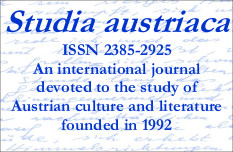Leerstellen, weiße Flecken und blassrote Zeichen im Schnee. Von Sinnverlust und Sinnfindung im mythischen Land der Kham-Nomaden in Christoph Ransmayrs Roman «Der fliegende Berg»
[Blank Spots, White Flecks and Pale Red Signs in the Snow. Of Meaning Lost and Found in the Mythical Land of the Kham Nomads in Christoph Ransmayr’s Novel «The Flying Mountain»]
DOI:
https://doi.org/10.13130/1593-2508/8537Abstract
In his novel Der fliegende Berg, Christoph Ransmayr plays with seemingly contradictory myths that surround the Himalayan mountain Phur-Ri, a mountain that is not marked on any maps and symbolizes a void, a figment of the imagination that serves as a foil for unfulfilled longings and desires. Using Roland Barthes and Mircea Eliade as its theoretical framework, this article analyzes the function of myths in Ransmayr’s novel and explores whether his use of myth can fill the void with meaning – or whether the void remains a vacuum that repells rather than allows for any form of signification.
Published
Issue
Section
License
Copyright (c) 2017 Studia austriaca

This work is licensed under a Creative Commons Attribution-ShareAlike 4.0 International License.
Licensed under a Creative Commons Attribution 4.0 International License
This journal allows the author(s) to hold the copyright without restrictions.
This journal allows the author(s) to retain publishing rights without restrictions.







